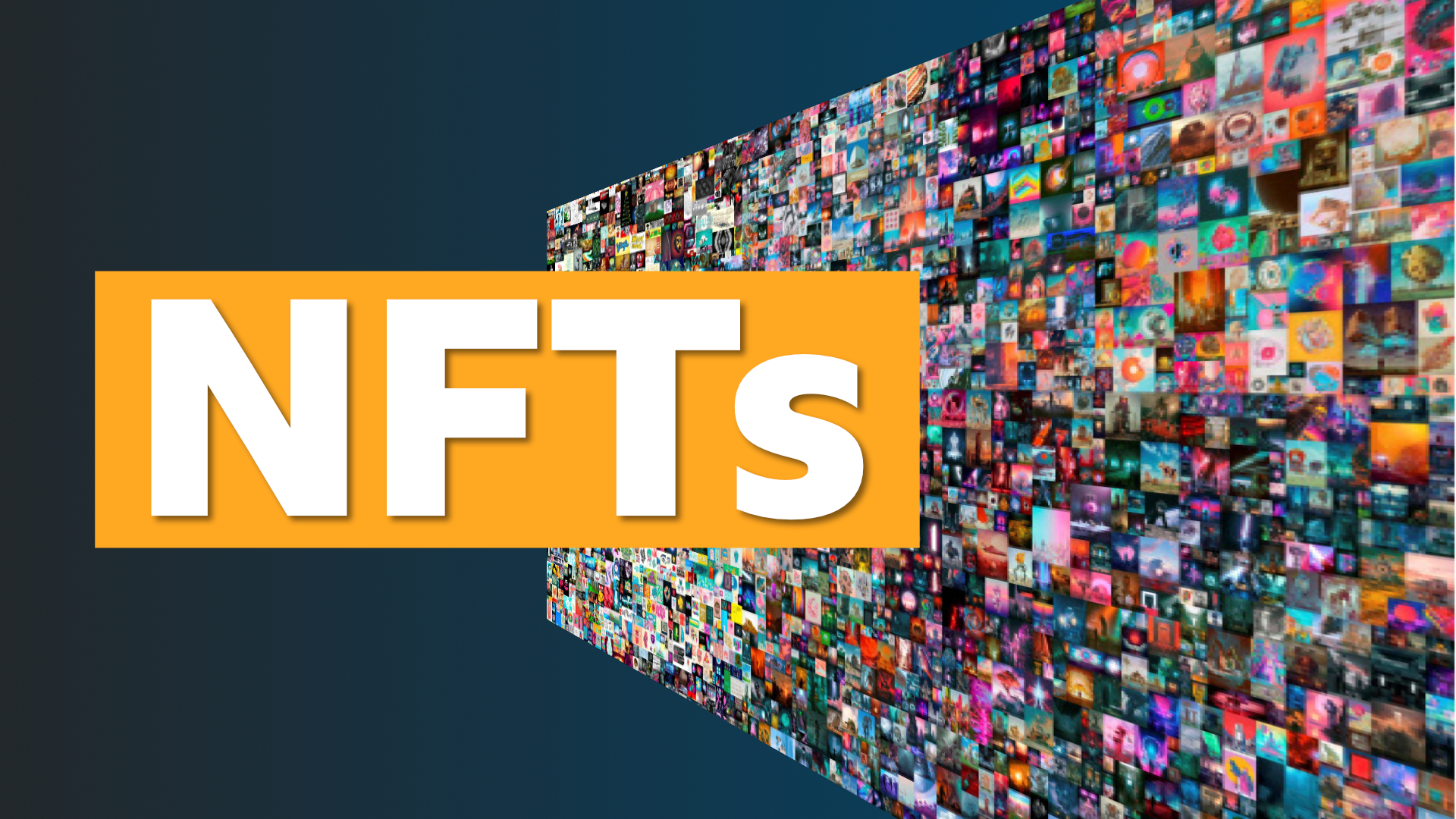Мертвы ли NFT? Оценка текущего состояния и перспектив развития NFT к 2025 году

Image source: https://www.bbc.com/news/technology-56371912
Однажды превозносимая как цифровая золотая лихорадка Web3, неделимые токены(NFTs) ворвались в мир криптовалют между 2020 и 2022 годами. Но по мере тушения первоначального ажиотажа многие начали задавать вопрос: Неужели NFT мертвы? В 2025 году ответ гораздо более тонкий. Хотя объем торгов снизился с пиковых уровней, NFT продолжают развиваться, переходя от спекулятивных коллекционных предметов к активам, внедренным в различные отрасли.
В этой статье мы исследуем, являются ли NFT по-настоящему умирающим трендом или просто переходят в более зрелую фазу.
Введение: Рост и Падение NFT
Рост NFT можно проследить до начала 2020-х годов, когда технология блокчейн позволила создавать уникальные цифровые активы, которые нельзя было скопировать, открыв новую эру цифрового владения. Бум NFT начался примерно в 2020 году, подогретый успехом крупных коллекций, таких как CryptoPunks и Bored Ape Yacht Club, а также многомиллионными продажами цифрового искусства на платформах, таких как Christie’s и OpenSea. Знаменитости, инфлюенсеры и крупные бренды присоединились к этой тенденции, выпуская собственные токены и продвигая NFT в массовое сознание. Восторг вокруг цифрового искусства, игровых активов и коллекционных предметов метавселенной привлек как опытных криптоинвесторов, так и любопытных новичков, что привело к взрывному росту объема транзакций и стремительному росту цен активов.
Однако взрывной рост оказался неустойчивым. К 2022 и в 2023 году рынок NFT начал проявлять признаки усталости. Торговые объемы упали, базовые цены снизились во многих коллекциях, и медийные нарративы сместились от энтузиазма к скептицизму. Многие проекты не смогли выполнить свои обещания, что привело к широкой критике NFT как спекулятивных пузырей. По мере того, как широкий крипто-рынок вошел в медвежий фазу, интерес к NFT угасал. Тем не менее, несмотря на этот спад, технология за NFT не исчезла — она начала развиваться. Сегодня в 2025 году экосистема NFT проходит трансформацию, отходя от гипе-ориентированной спекуляции к практической ценности в реальном мире, улучшенной функциональности и глубокой интеграции с другими блокчейн-приложениями.
Тенденции рынка: сдвиг в сторону утилитарности и совместимости
В 2025 году, рынок NFTпереживает фундаментальный сдвиг от спекулятивной торговли к практической ценности в реальном мире. Во время начального бума NFT в основном ассоциировались с цифровым искусством и коллекциями PFP (профильной картинки). Хотя они все еще существуют, пользователи и разработчики теперь требуют более конкретной ценности. NFT все чаще используются в качестве ключей доступа к онлайн-сообществам, билетам на мероприятия, актам на виртуальную недвижимость, инструментам проверки личности и бонусным программам. Этот переход к практическому применению помогает NFT преодолеть хайп и стать неотъемлемой частью повседневного опыта. Например, членства на основе NFT предлагают держателям эксклюзивные бонусы, такие как доступ к продуктам до начала продаж, ограниченный контент и участие в мероприятиях в реальном мире, способствуя более глубокому взаимодействию между брендом и пользователем. Эти модели на основе ценности привлекают не только коллекционеров, но и институты и предприятия, стремящиеся улучшить цифровое взаимодействие со своей аудиторией.
Наряду с этим, интероперабельность стала центральной темой инноваций в области NFT. Ранее NFT были ограничены цепями, на которых они были созданы, что ограничивало их применимость и охват. Однако появление мультицепочечных экосистем и кросс-цепочечных мостов для NFT разрушает эти силосы. Протоколы, такие как LayerZero, и платформы, такие как Stargate Finance, обеспечивают безпрепятственное перемещение NFT по цепям, таким как Ethereum, Avalanche, BNB Chain и Polygon. Эта кросс-цепочечная совместимость крайне важна для создания единого метавселенной опыта, интероперабельных игр и децентрализованных рынков, которые не ограничены одной блокчейном. Gate.com также принимает эту тенденцию, с ее NFT Magic Box, поддерживающим мультицепочечные активы и предлагающим инструменты, упрощающие создание и торговлю NFT по экосистемам. По мере улучшения интероперабельности, NFT станут более доступными, универсальными и интегрированными в более широкий ландшафт Web3.
Технологические инновации: улучшение пользовательского опыта и устойчивость

Источник изображения: 10 удивительных и инновационных примеров NFT, о которых должен знать каждый | Бернард Марр
Одним из ключевых вызовов, с которыми столкнулись NFT, была экологическая устойчивость. В настоящее время большинство экосистем NFT перешли на более эффективные механизмы консенсуса, такие как Proof-of-Stake (PoS), минимизируя свой углеродный след.
Тем временем переосмысливается пользовательский опыт. Платформы NFT теперь предлагают упрощенное присоединение, более легкую интеграцию кошелька и более плавные транзакции.
NFTтакже сливаются с технологиями расширенной реальности (XR), такими как виртуальная и дополненная реальность, чтобы обеспечить захватывающие метавселенские переживания.
Принятие отраслью: NFT в играх, искусстве и за его пределами
Далеко от затухания, NFT видят более глубокое принятие в секторах, таких как игры, цифровое искусство и мода. Игры на основе блокчейна интегрируют NFT как основные элементы игрового процесса — игроки действительно владеют своими цифровыми активами.
Бренды моды и развлечений используют NFT для ограниченных выпусков, доступа к мероприятиям и эксклюзивных привилегий. Даже образовательные учреждения экспериментируют с NFT для аккредитации.
Регулятивная среда: навигация по вызовам и возможностям
По мере того, как NFT становятся более зрелыми, правительства и регулирующие органы начинают уделять более пристальное внимание их юридическим и финансовым последствиям. Основная проблема заключается в двусмысленности, связанной с тем, как классифицируются NFT — являются ли они ценными бумагами, предметами коллекционирования, интеллектуальной собственностью или чем-то совершенно другим? В Соединенных Штатах SEC не вынесла окончательной позиции по NFT, оставив многие проекты в состоянии неопределенности. Между тем, Европейский Союз рассматривает NFT в соответствии со своим положением о рынках криптоактивов (MiCA), которое, вероятно, будет включать в себя рекомендации по выпуску NFT, роялти и защите потребителей. По мере того, как регулирование становится более четким, оно может поощрять институциональное участие и массовое внедрение, но оно также требует проектов по обеспечению соответствия, включая раскрытие информации, налоговые обязательства и меры по борьбе с отмыванием денег (AML).
В Азии регулятивные реакции были разнообразными. Китай, например, запретил публичную торговлю NFT для ограничения спекуляций, но продолжает поддерживать «цифровые коллекционные предметы» через государственно поддерживаемые платформы, функционирующие в закрытых экосистемах. С другой стороны, Япония и Южная Корея продемонстрировали более открытый подход, активно продвигая использование NFT в игровой и медийной сферах. Эти региональные различия представляют собой как вызов, так и возможность для глобальных платформ NFT — они должны ориентироваться в лабиринте стандартов соблюдения, но также имеют шанс локализоваться и инновировать в рамках конкретных правовых структур. Впереди важное сотрудничество между регуляторами и крипто-сообществом будет критическим для разработки политики, защищающей потребителей и способствующей росту в сфере NFT.
Перспективы: Выживут ли NFT или исчезнут?
Рынок NFT несомненно находится в другой фазе, чем был во время своего взрывного роста. Тем не менее, инновации продолжаются, и принятие расширяется на новые секторы.
Эксперты утверждают, что NFT станут основой цифровой собственности в наступающей эре Web3. Вместо того чтобы умирать, NFT превращаются в фундаментальные технологии — подобные электронной почте или веб-сайтам — неотъемлемы, но менее эффектные.
Вывод: Возможности NFT в условиях вызовов
Итак, NFT мертвы в 2025 году? Короткий ответ - нет. Они больше не являются объектом спекулятивного ажиотажа, какими они были раньше, но это не означает, что они нерелевантны. Фактически, NFT становятся более функциональными, регулируемыми и бесшовно интегрируются в нашу цифровую жизнь.
Поскольку платформы, подобные Gate.com, продолжают поддерживать развитие NFT через маркетплейсы и проекты Launchpad, NFT готовы к более устойчивому и значимому будущему.
Похожие статьи

Как переводить средства с Binance безопасно и эффективно

Понимание токена TRUMP в одной статье: Комплексный анализ токена $TRUMP

Как отследить транзакцию USDT BEP20?

Сколько времени займет добыча 1 биткойна в 2025 году? Подробное руководство

Что такое MELANIA: мем-монета на миллиард долларов, запущенная первой леди США


